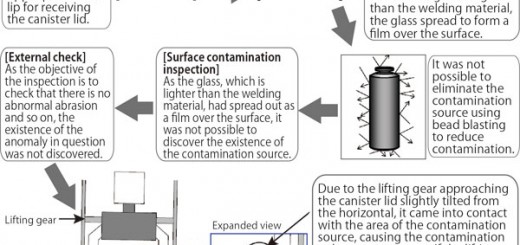CNIC Statement: The system for recruiting municipalities to host nuclear waste dumps must be comprehensively reviewed
Citizens’ Nuclear Information Center
October 13, 2020
On October 9, Suttsu Town, Hokkaido and Kamoenai Village each officially decided to accept a ‘literature review,’ which is the first step in selecting geological disposal sites for high-level radioactive waste. Mayor Kataoka Haruo decided independently to apply for Suttsu Town and submitted the application documents to NUMO. The Kamoenai Village Council adopted a petition from the local chamber of commerce which urged the Village to apply, and Mayor Takahashi Masayuki announced that he will accept the request from the Minister of Economy, Trade and Industry (METI) to take part in the ‘literature review.’ The governor of Hokkaido, Suzuki Naomichi, requested both municipalities to refrain from applying, but this request was ignored.
In Suttsu-cho, Mayor Kataoka made his decision only on the basis of a full-member meeting of the consultative committee, he did not call a Council meeting to deliberate on this issue. The application was arbitrary, ignoring the voices of the residents asking for a referendum.
Kamoenai Village accepted METI’s request to apply for the ‘literature review.’ It is obvious that METI’s intervention was simply to show that both these two methods can achieve their intended ‘results.’ However, even though the Council adopted the petition to apply, immediately accepting the request from the national government, shows us that this application method doesn’t respect the will of the local residents either, but rather the will of METI.
The prefectural governor’s opinion is also sought at the time of entering the next stage of the nuclear waste dump selection process, the ‘overview survey.’ If the governor opposes it, METI explains, the municipality will be ‘out of the selection process.’ The Hokkaido governor has repeatedly expressed his opposition. Although it is known that these two municipalities will be ‘out of the selection process’ in two years, the mayors of the town and village still applied at their own discretion, regardless of the opinion of the governor. Moreover, METI, also knowing the governor’s opposition, still made a request for Kamoenai Village to apply. It must be said that this process itself has major defects.
A maximum of 2 billion yen will be granted to each of the municipalities during the ‘literature review’ period. In this case, the grant will be paid even though it is clear that the dump project will not proceed further. Such wasteful use of national tax should not be allowed. Moreover, in both areas, there is little prospect of securing a sufficient area for an underground waste disposal site. Especially in the case of Kamoenai Village, which the government requested to apply, METI must explain how it could possibly be judged to be an appropriate place for a radioactive waste dump.

